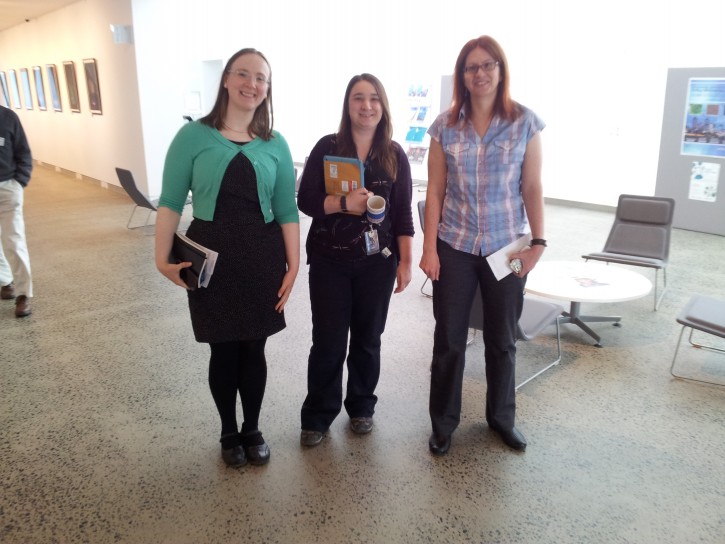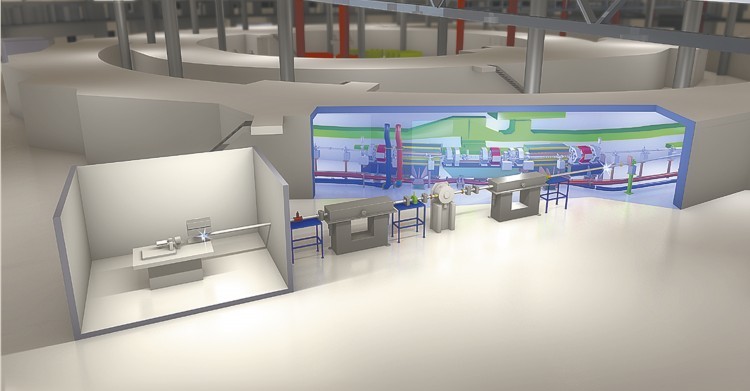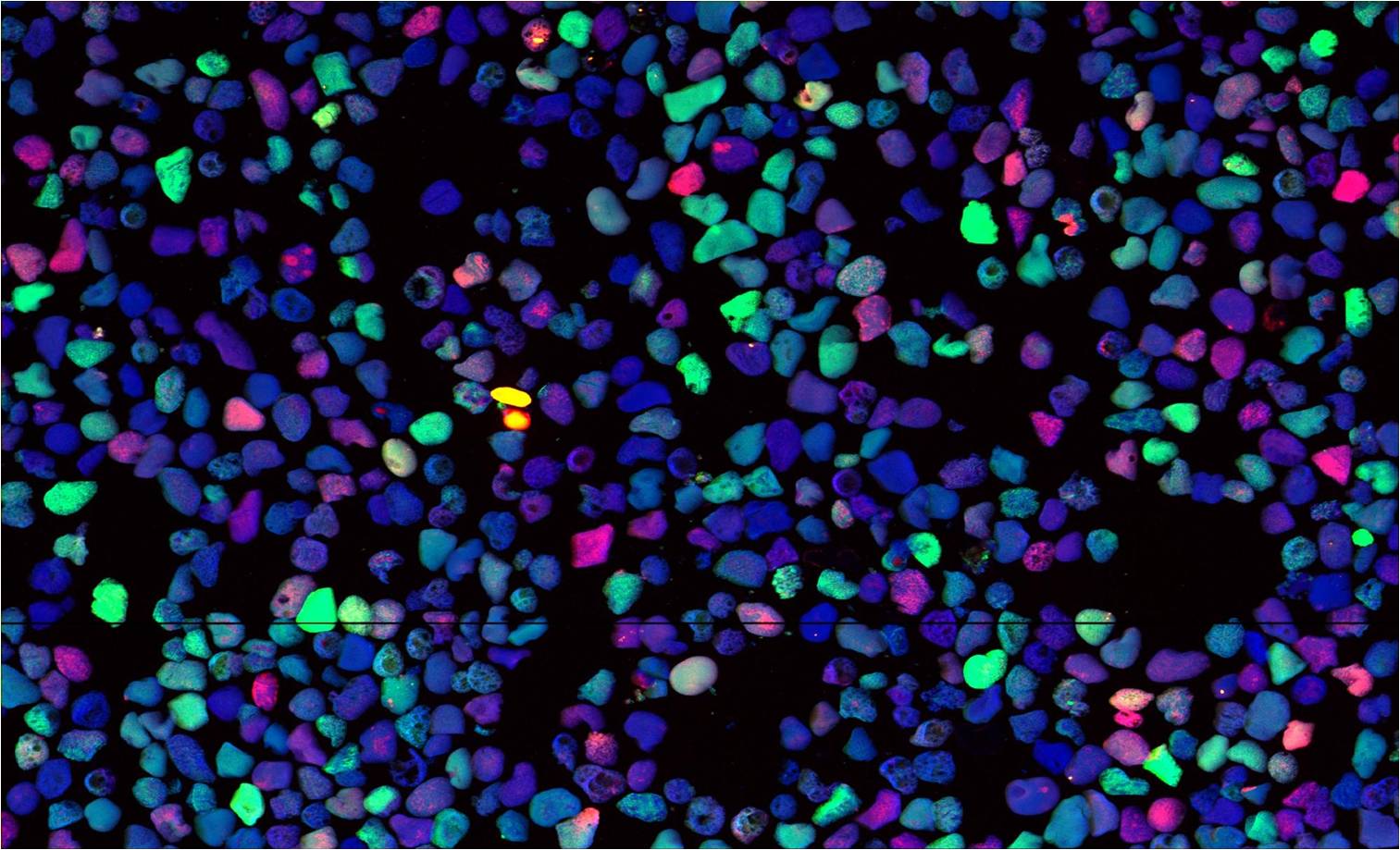AIG’s South Australia Branch is conducting a study tour examining the terroir of the Adelaide Hills Wine Region, 6th December 2014.
The tour will visit four wineries in the Adelaide Hills Wine Region: Murdoch Hill, Goldings Wines, Paracombe Premium Wines and Ngeringa; to study aspects of the terroir of the various vineyards. We will be talking to the winemakers at each location to discuss the important contributors to terroir: geology, regolith, soil, altitude and microclimate, sun aspect, vine selection, trellising and pruning practices, picking parameters (baumé, acidity), picking technique and oenological practices.
The purpose of the tour is:
We would like our members to contribute their geological ideas to these discussions especially since our vi-gneron friends are as keen to learn from us as we are from them. Click here for further information and to book your place.
The Federal Treasury has released draft legislation to implement the government’s promised Exploration Development Incentive.
The proposed Exploration Development Incentive would be available to Australian-resident investors in small mineral exploration companies. Under the incentive, investors may be entitled to the EDI tax offset or additional franking credits where the company in which they are a member issues them an exploration credit.
Companies may issue exploration credits to their shareholders up to a capped amount in an income year, with the cap for a company based on the company’s exploration expenditure and tax loss for the relevant income year, adjusted by a modulation factor to ensure that the total value of credits provided in respect of an income year does not exceed $25 million in respect of 2014-15, $35 million for 2015-16 and $40 million for 2016-17.
The Government made a commitment in the 2013 election campaign to provide a tax incentive to Australian resident shareholders of small mineral exploration companies to support the greenfields minerals exploration undertaken by these companies in Australia. The Government proposed that the incentive would be available in respect of expenditure on greenfields minerals exploration incurred in 2014-15, 2015-16 and 2016-17. This proposal was confirmed in the 2014-15 Budget.
The incentive, as proposed, will not be available in respect of exploration expenditure incurred in income years after 2016-17. The Department of Industry will monitor greenfields exploration and the scheme throughout its operation, with a review of the scheme in 2016 and, subject to these review outcomes, the programme may be extended for a further period.
Treasury has invited submissions fro interested parties regarding the proposed legislation. Click here for additional information. Members with a view on the proposal are encouraged to make an individual submission (which may be submitted on-line via the link provided above. Any thoughts on the proposal may also be sent to Lynn Vigar or added to the conversation on AIG’s Linkedin members’ group to assist in compiling an AIG submission representing members’ views.
The deadline for submissions is Friday, 24 October 2014.
Andrew Waltho
We were a happy team of geos that ventured beyond the MCG on the Monday after the AFL Grand Final in September to visit the Australian Synchrotron, which is about the size of the MCG!
Earlier this year Kaylene Camuti met the Synchrotron’s Dr Tamsyn Ross, who suggested that a group from the AIG should visit the facility. Consequently, a party of 17 from the Victorian branch made the trip to the Melbourne suburb of Clayton, near Monash University. We were greeted by Tamsyn and her colleagues, Dr Helen Brand, Dr Kathryn Spiers and Dr David Cookson, each of whom gave us a talk, and then guided our group around this most impressive facility. Images can be seen on Dropbox folder \AIG_Vic\Aus Synchrotron_2014-09-29.
It was a terrific visit. The Synchrotron is potentially a very powerful tool. We left the facility rather like a character in the Arthur C Clarke/Stanley Kubrick book/movie, 2001- A Space Odyssey – we’ve got ourselves this tool, but we’re not too sure where it’s going to lead us! But we are exploration geos so we’ve got to give it a go. David Cookson, who is Head of Beamline Science and Operations, was particularly keen to encourage smaller enterprises to use the Synchrotron, and emphasised that they would try to accommodate any testing that geologists might wish to do—at a modest rate. Note that for geos in New South Wales there is already a state-funded support scheme in place (see section on NSW Industry Synchrotron Access Scheme, below). It is also possible for geologists working in academia to apply for access through the merit system.
A synchrotron is a machine that produces intense light, which can be used to investigate the details of matter from the atomic- to the nano-scale. It can be used for many different applications including, for example, determining mineral phases, characterising pore structures, or mapping mineral traces in sectioned rocks. The AS is currently used by scientists from a diverse range of disciplines including agriculture, pharmaceuticals, forensics, advanced materials – geologists and metallurgists already use it to study rocks and minerals, and there are many possibilities for professionals working in these fields.
In basic terms the Synchrotron comprises a centrally-located electron gun, an accelerator, an inner booster ring, and an outer storage ring. Electrons are generated by the electron gun and accelerated to near the speed of light before being transferred to the storage ring where they are manipulated to give off light. The electrons circulating the storage ring are kept at a constant energy, apparently completing 1.4 million laps of the storage ring every second for about three days, all the while being used to produce beams of intense synchrotron light. Radiating tangentially from the storage ring are nine ‘beamlines’ – where the light generated in the storage ring is conditioned (filtered and focussed) as it propagates.
The Australian Synchrotron
1. Electron Gun: Electrons are generated inside an electron gun by heating a barium compound cathode to ~ 1000°C. Bunches of electrons are accelerated away from the cathode surface and out of the gun using 90,000 volts.
2. Linear Accelerator (Linac): In the Linac, the electrons are accelerated to 99.9987% of the speed of light. They exit the linear accelerator with 100MeV of energy. The energy used to accelerate the electrons comes from a radio frequency (RF) current of 3GHz. Radio frequencies are part of the electromagnetic spectrum, just like infrared light, but they have lower energy levels and therefore longer wavelengths. The spacing of the electron bunches matches the wavelength of the RF current, thus ensuring that the electrons receive a ‘push’ through the regions where the RF current is applied.
3. Booster Ring (synchrotron): The electrons are transferred from the Linac to the Booster Ring, where their energy is boosted to 3GeV using more RF energy. In the Booster Ring, dipole electromagnets force the electrons to adopt an almost circular path. The electrons complete approximately 1 million laps in half a second, before passing into the Storage Ring.
4. Storage Ring: In the Storage Ring, electrons circulate at aconstant energy for many hours, and continuously generate intense synchrotron light. To ensure the number of electrons circulating remains nearly constant, they can be topped up by injecting more into the ring approximately every few minutes. An electron will complete around 1.4 million laps of the Storage Ring every second.
5. Beamlines: The synchrotron light – created by bending the path of the electrons through magnetic fields – is then channelled from the Storage Ring down long pipelines, called beamlines, so that scientists can utilise it for research. Each beam line includes different types of filters, mirrors and other optical components that prepare the light for use in a range of different scientific experiments.
6. End Station: At the end of each beamline is an End Station – a laboratory where the synchrotron light interacts with a sample. Detectors positioned around the sample measure how the light is transmitted, emitted, scattered or diffracted (depending on the experiment) by the sample. Researchers use this information to determine the composition or atomic structure of the sample, or to create a map-like image of the sample.

From left to right:Tamsin Ross, Helen Brand and Kathryn Spiers who helped conduct the AIG tour of the Australian Synchrotron facility
For scientists visiting the Synchrotron the fun begins at the end of each beamline where the end-station and user cabin are located. Scientists mount samples in the end-station and control the experiment while sitting in the cabin. It is in the end-station that a geologist could present a sample to be zapped by the very narrow, very intense beam of light (at X-ray or infrared frequencies). Depending on the technique, a variety of detectors will measure how the light is transmitted, emitted, scattered or diffracted by the sample. On the XFM beamline a geologist could, for example, create an elemental map of the surface of a rock or mineral sample – but each of the nine beamlines has a unique function with a wealth of possibilities.
The primary capabilities and basic applications of each of the Synchrotron’s beamlines is given in the table below. Uses of any given beamline may extend beyond what is given here, and interested parties are encouraged to enquire at the Synchrotron about any ideas they might have. Tamsyn Ross and her colleagues are preparing a technical article for AIG NEWS (Ross, T., et al, (in prep): working title is ‘Geological and metallurgical uses for the Australian Synchrotron’).
Australian Synchrotron Beamlines
|
Beamline |
Description |
| IMBL (Imaging and Medical Beamline |
A beamline utilising higher energy X-rays that can be used for 3D X-ray imaging with micron resolution – can be used to visualise the internal structure of samples non-destructively |
| IR Microscope (Infrared Microscope) |
An FTIR (Fourier transform infrared) system which mixes mid-infrared spectroscopy with fine resolution to give spatial mapping of organic compounds |
| Far–IR/THz (Far-Infrared/Terahertz Beamline) |
An FTIR system which uses far-infrared spectroscopy to study molecular structure – often in gas phases |
|
MX |
A powerful facility for determining the arrangement of atoms and molecules in single crystals, providing detailed information on molecules ten to tens of thousands of atoms in size”A powerful facility for determining the arrangement of atoms and molecules in single crystals, providing detailed information on of molecules ten to tens of thousands of atoms in size |
| PD (Powder Diffraction) |
A facility for investigating the bulk properties of crystalline samples at high resolution – particularly useful for identifying and quantifying crystalline phases, as well as monitoring the behaviour of crystalline materials in non-ambient and dynamic environments |
| SAXS/WAXS (Small Angle X-ray Scattering/Wide Angle X-ray Scattering) |
A flexible beamline used for investigating features ranging in size from 1 to 100 nanometres in bulk solid or liquid samples – useful for determining particle and pore sizes in natural and man-made materials |
| Soft X-ray | A beamline most suited to non-destructively characterising surfaces and near-surface interfacial layers |
| XAS (X-ray Absorption Spectroscopy) |
A beamline used particularly for investigating the oxidation state and coordination environment of atoms in solid and liquid samples |
| XFM (X-ray Fluorescence Microscopy) |
A powerful beamline regularly used for high-resolution elemental mapping of solid samples containing heavy elements |
The Australian Synchrotron website also has a little information on each of the beamlines as PDF fact sheets which are available from the synchrotron website.

A rendered example of one of the Synchrotron’s beamlines being used for crystallography. Image courtesy of the Australian Synchrotron

Synchrotron image showing distribution of titanium (blue), niobium (green) and thorium (red) in ilmenite. Ilmenite sample courtesy of Peter Kappen, La Trope University; image from XFM beamline and CSIRO collaborators Chris Ryan, Robin Kirkham and Gareth Moorehead (no scale provided).
As mentioned above, for researchers working in industry in New South Wales there is a state-funded support scheme already in place.
The NSW Industry Synchrotron Access Scheme is a program that is currently being run by the NSW government which allows bodies conducting commercially-relevant research within NSW to apply for fully-funded beamtime on any of the beamlines at the Australian Synchrotron. The advantages of applying for beamtime through the NSW Industry Synchrotron Access Scheme are that there is no need to publish the work (as would be necessary through the standard merit access program), little is required in the way of preparing a proposal for the work (with assistance from the applicant, the Synchrotron handles most of the paperwork) and access to the Synchrotron through this scheme is typically more rapid than through the merit access program (access to some beamlines may still be possible in late 2014). A further important point is that the applicant retains their IP on work.
The Beamline Industry Group is a group of scientists dedicated to supporting commercial research taking place at the Synchrotron, in particular that of applicants to the NSW Industry Synchrotron Access Scheme. They offer obligation-free exploratory talks about potential projects, assistance with experimental design and expert support during beamtime – other services available include data analysis and reporting.
Beamline Industry Group Homepage: www.synchrotron.org.au
NSW Industry Access Page: industry.synchrotron.org.au/industry-access/nsw
Geoff Hodgson
AIG Victoria Branch
Dr Roger Taylor is again presenting three economic geology short courses in Adelaide for AIG’s South Australia Branch this December:
Follow the links for further information regarding each course. These courses proved to be very popular when presented in Adelaide last year.
A tour focusing on the geology of one of South Australia’s wine regions is being planned for Saturday 6th December. Watch the AIG web site for details.